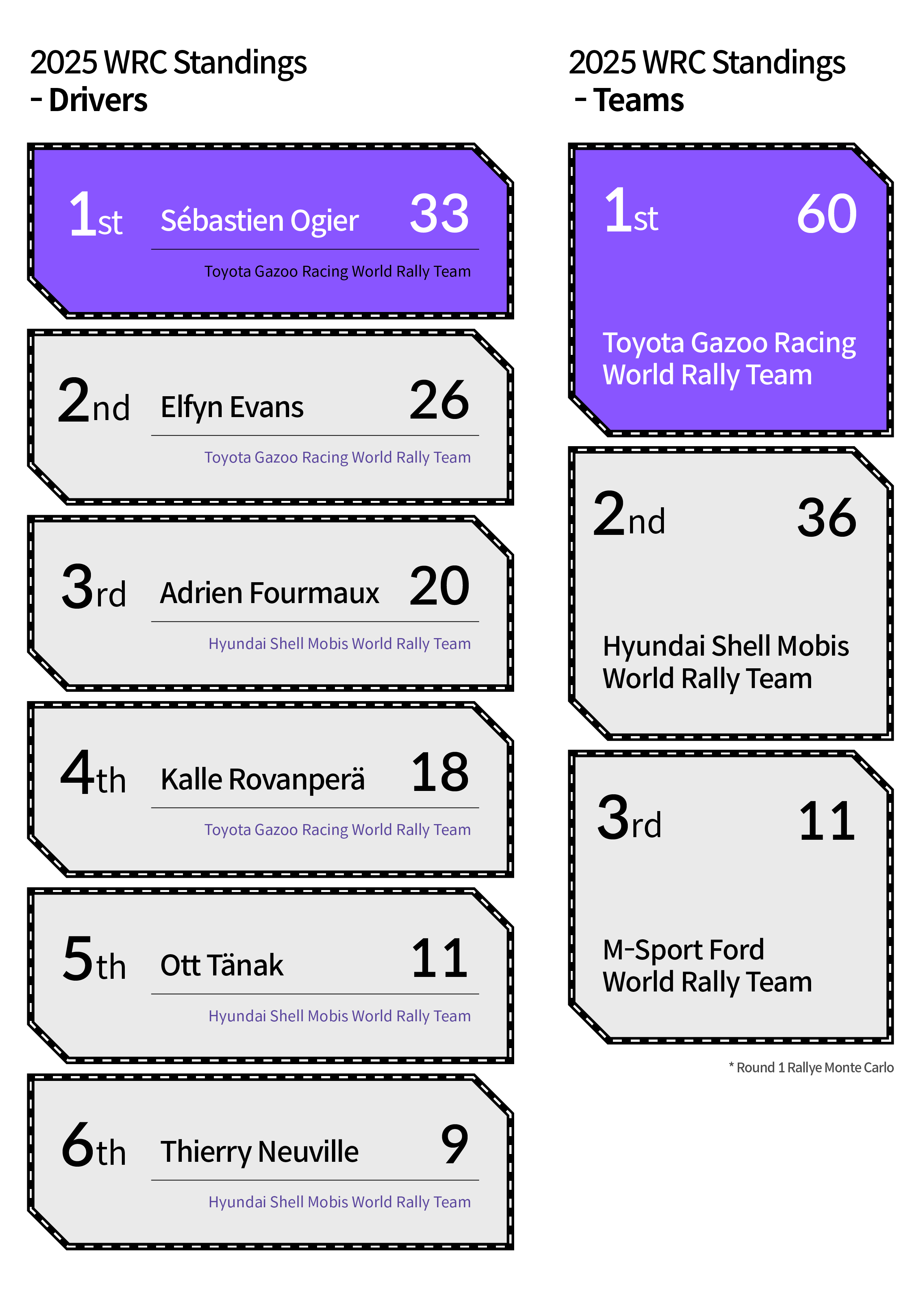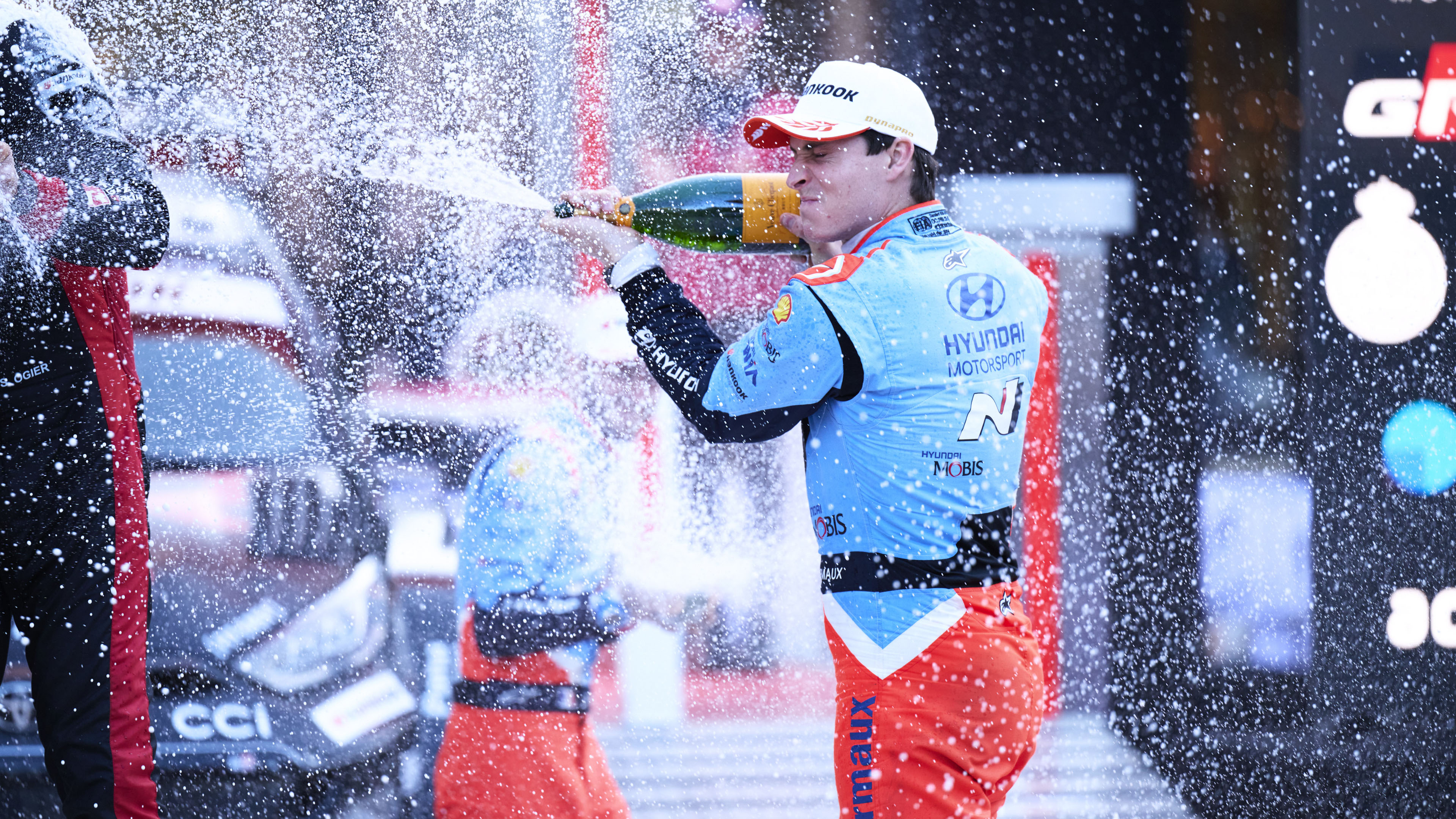
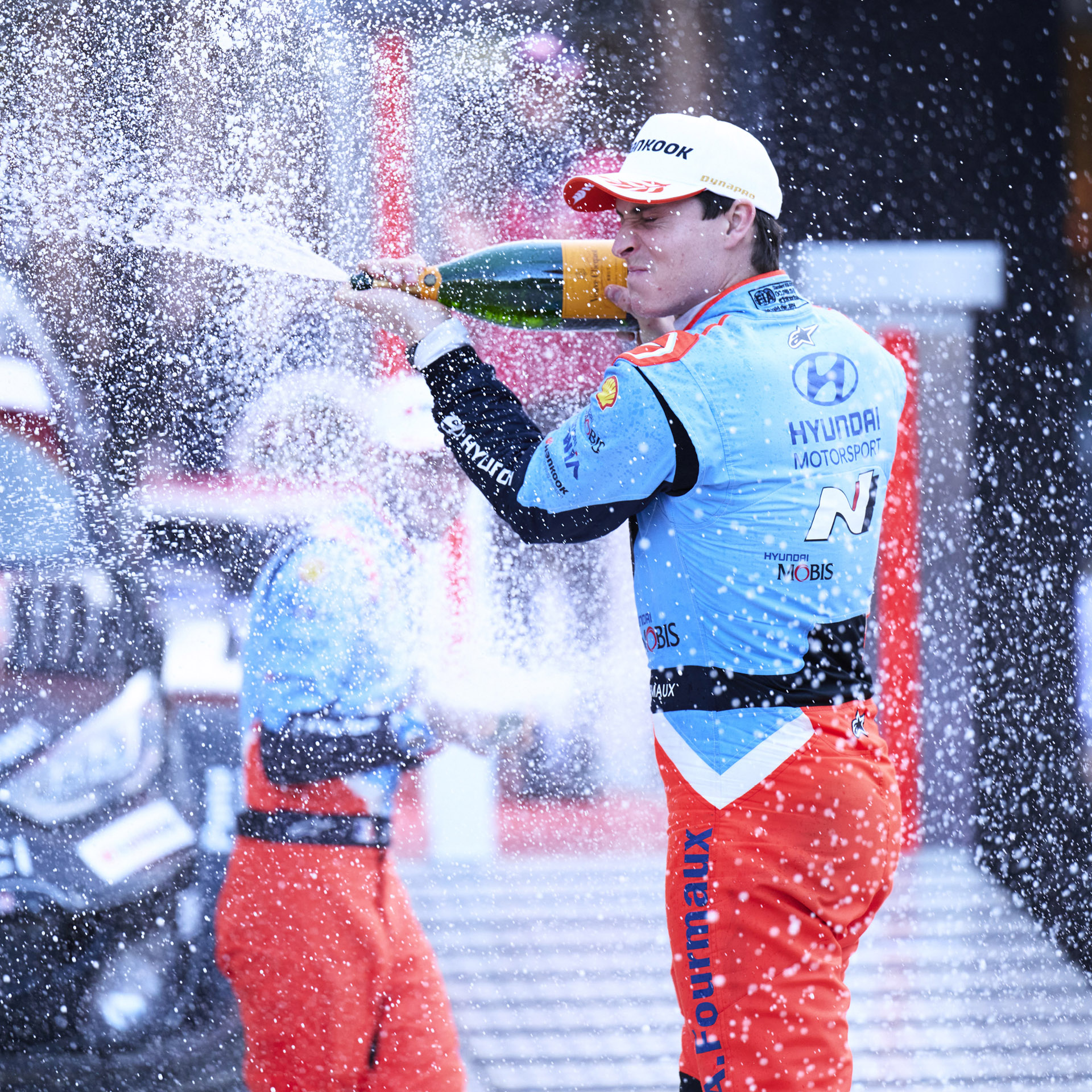


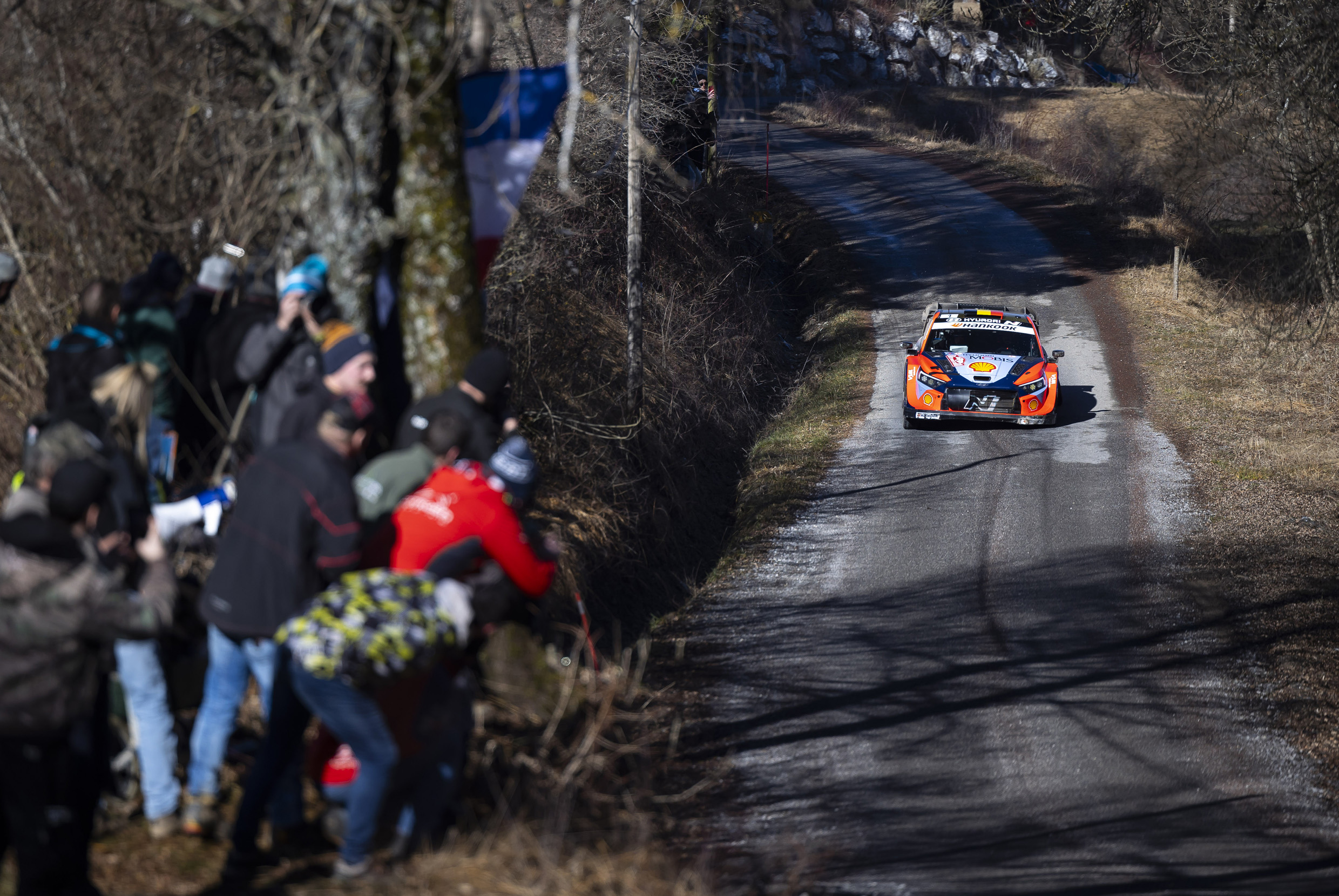
Every January, the tiny principality of Monaco hosts the Monte Carlo Rally, one of the most prestigious and grueling events on the WRC calendar. First held in 1911—long before the birth of the World Rally Championship in 1973—Monte Carlo has been the go-to season opener for decades, blending history, glamour, and motorsport prestige into one unforgettable showdown.
Monaco is the second-smallest country in the world (only behind Vatican City), which makes hosting a full-scale rally within its borders virtually impossible. Instead, while the opening ceremonies and podium celebrations take place in Monaco, the actual rally action unfolds in the French Alps, just across the border. The Alpes-Maritimes region, where most of the rally is staged, is a breathtaking yet brutal proving ground for WRC drivers. The unpredictable winter conditions and icy switchbacks push even the most experienced drivers to their limits. And then there’s Col de Turini, the crown jewel of Monte Carlo’s stages. This high-altitude, serpentine road features tight hairpins, and steep climbs, delivering some of the most heart-stopping moments in rally history.
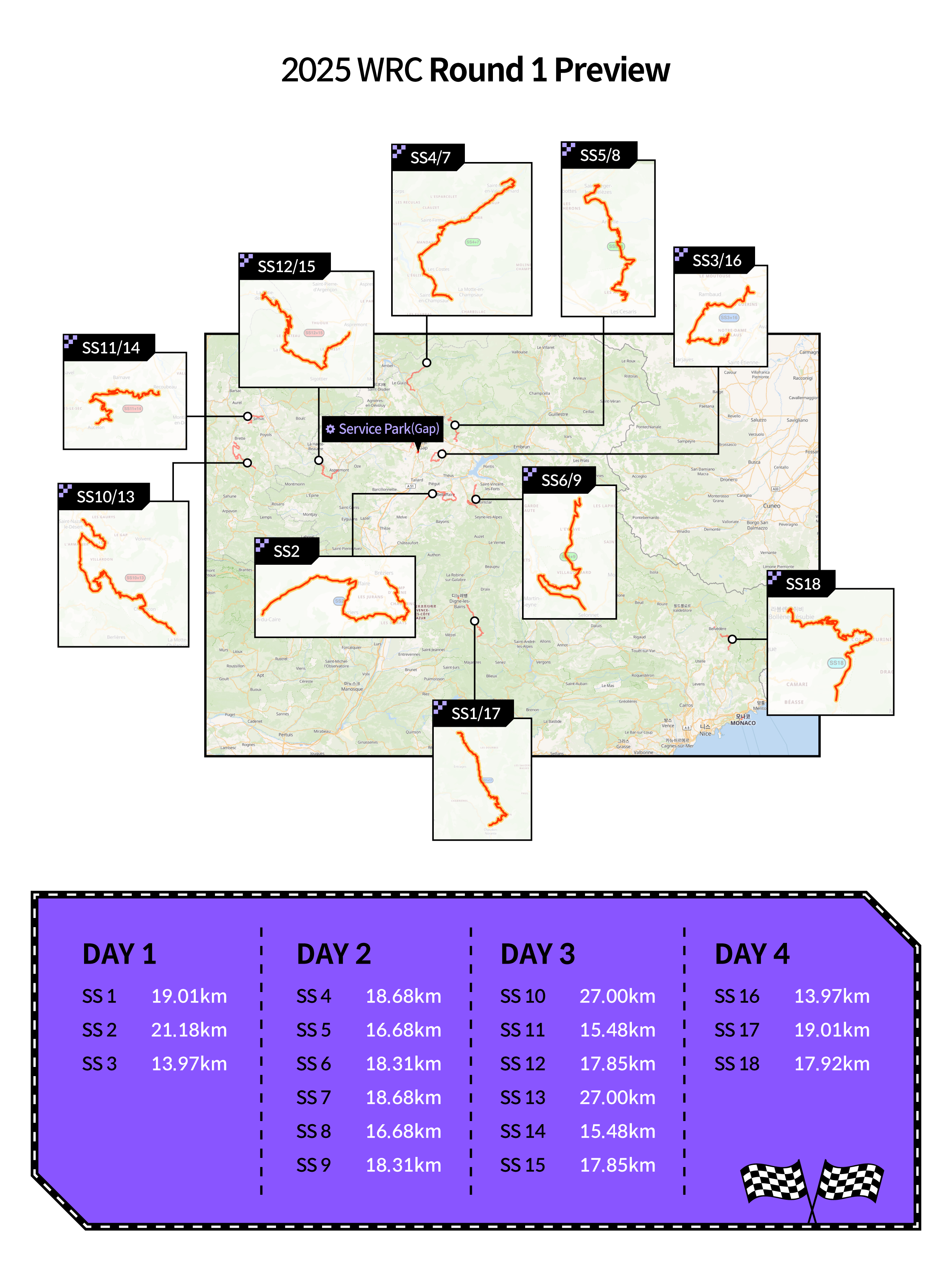
Monte Carlo’s narrow, winding mountain passes are notorious for their unpredictable conditions, with a treacherous mix of snow, ice, and ever-changing grip levels. To make things even more intense, the opening day features night stages, forcing drivers to navigate pitch-black roads with only their headlights cutting through the darkness. The surface can switch from dry asphalt to damp patches in an instant, with some sections completely covered in snow and ice, making tire selection a high-stakes gamble. Adding to the challenge, 2025 marks a major shift in Rally1 regulations, as hybrid powertrains have been scrapped, leading to subtle but crucial changes in car dynamics. On top of that, Hankook Tire replaces Pirelli as WRC’s official tire supplier, meaning teams will have to quickly adapt to new tire characteristics—a factor that could play a decisive role in early-season performance.
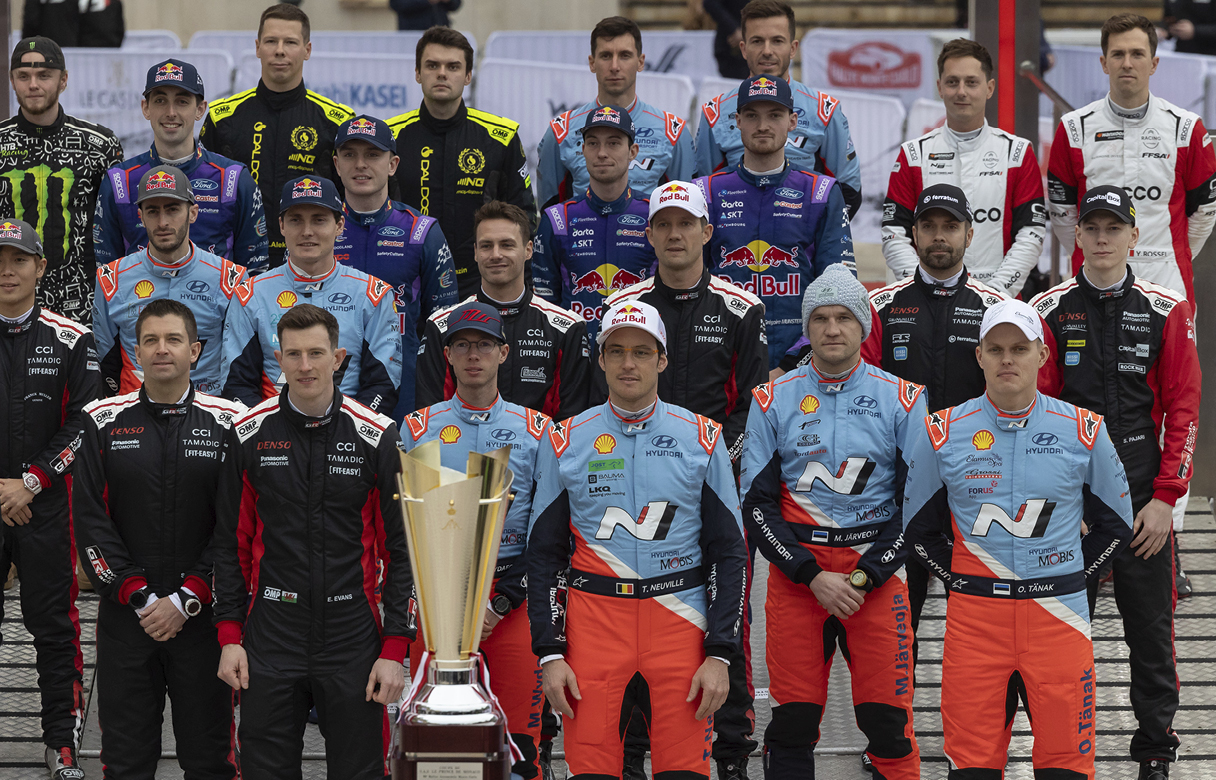
The 2025 WRC season kicks off in Monte Carlo with a 70-car grid, including 10 Rally1 entries. Hyundai Motorsport GmbH has locked in a full-season lineup featuring reigning world champion Thierry Neuville, 2019 titleholder Ott Tänak, and newcomer Adrien Fourmaux, making history as the first time Hyundai fields only full-time drivers for an entire season.
Until now, only Neuville and Tänak had guaranteed full-season seats, while Hyundai’s third car was shared among part-time drivers. Last year, that role rotated between Dani Sordo, Esapekka Lappi, and Andreas Mikkelsen, allowing Hyundai to strategically match drivers to specific rallies based on surface conditions and past performances.
While this flexible approach provided tactical advantages, it came with downsides, including slower adaptation to the car and inconsistent seat time—factors that could impact overall performance. Part-time drivers also had no shot at the championship, limiting their long-term potential. With Cyril Abiteboul securing rising star Adrien Fourmaux and committing him to a full-season drive, Hyundai has officially abandoned its rotating-driver strategy in favor of a more consistent, title-focused approach.
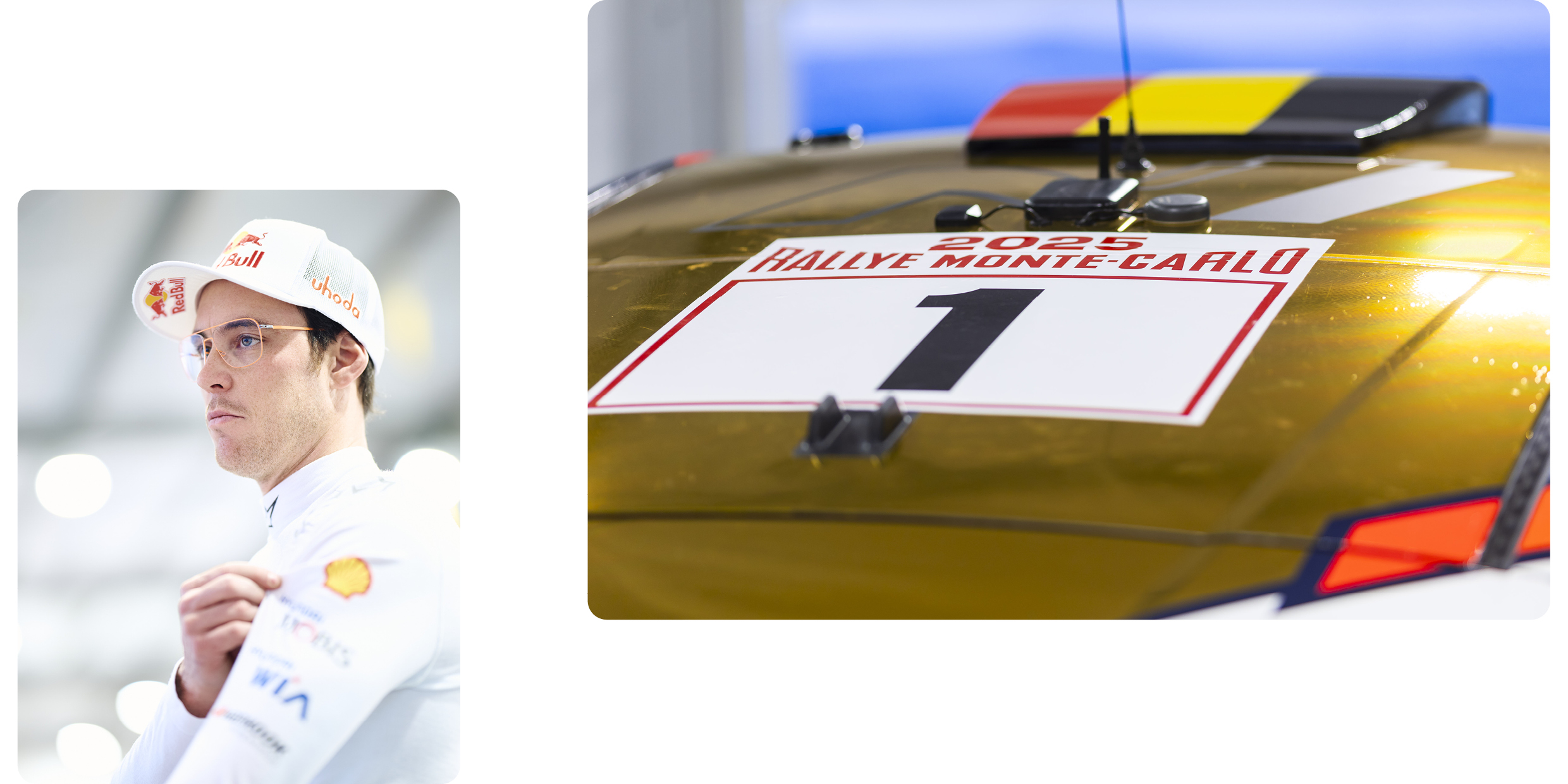
Neuville celebrated a dream-like end to the previous season, finally clinching his long-awaited WRC title after 15 years in the sport and 11 seasons with Hyundai. Proudly displaying his accomplishment, he enters 2025 with car number 1 on his i20 N Rally1. With Neuville now joining the exclusive club of champions, this season features a fierce battle among four titleholders—Ogier, Rovanperä, Neuville, and Tänak.
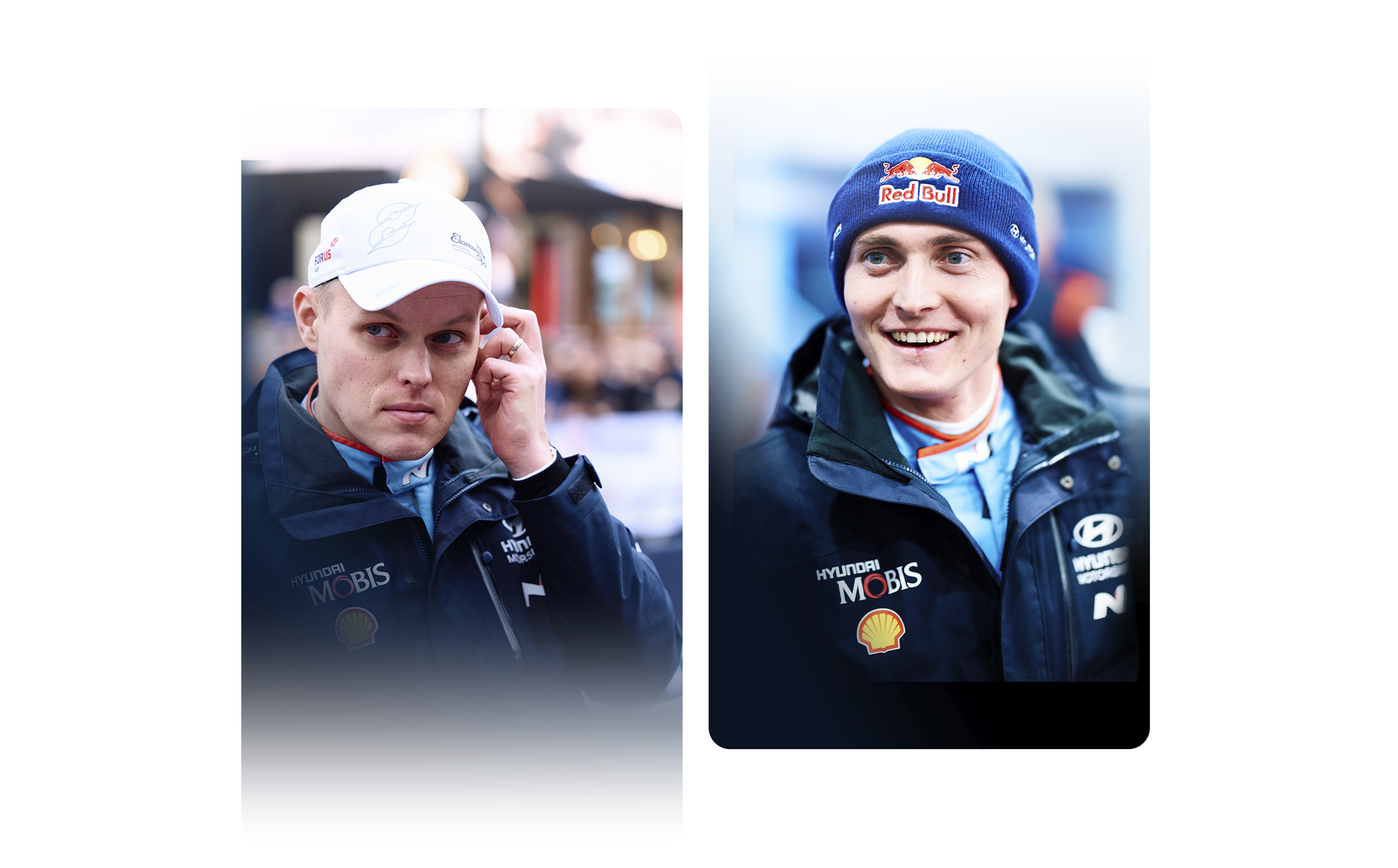
Meanwhile, one of the biggest off-season moves was Adrien Fourmaux’s switch to Hyundai, a move that has generated significant buzz. The young French driver secured five podium finishes last season with M-Sport Ford, finishing fifth in the championship standings. If he quickly adapts to the i20 N Rally1, he could deliver results beyond expectations.
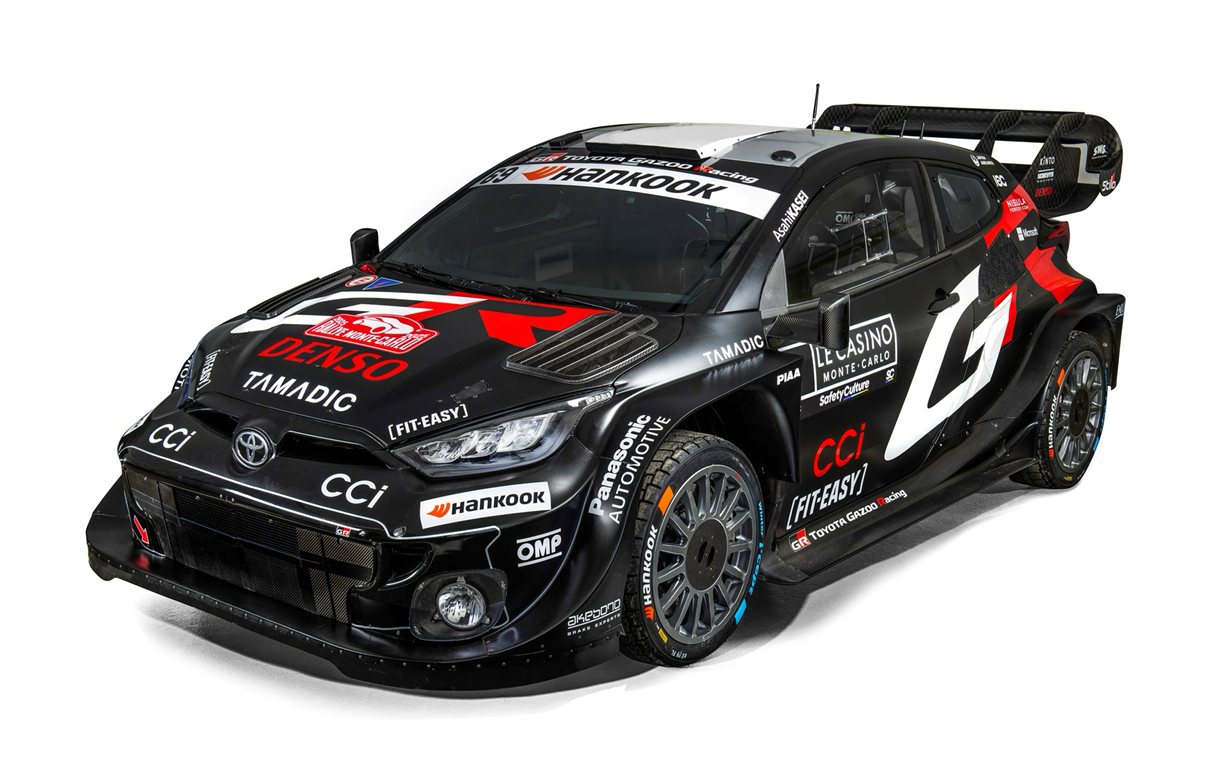
Toyota may have stolen the manufacturers’ title in a dramatic last-minute turnaround at the final round, but throughout the season, they often found themselves trailing Hyundai. For 2025, they’ve reinforced their squad with two-time champion Kalle Rovanperä returning from his sabbatical, alongside Elfyn Evans and Takamoto Katsuta. Eight-time champion Sébastien Ogier will continue as a part-time contender, just as he did last year. Toyota is also adding fresh talent with 2023 WRC2 champion Sami Pajari, potentially fielding up to five Rally1 cars this season.
Pajari, who has been gaining Rally1 experience in select events since last year, is officially entering under Toyota Gazoo Racing WRT2, a satellite team rather than the main factory squad. Meanwhile, Lorenzo Bertelli—the heir to the Prada Group fortune and an occasional WRC competitor—has been confirmed to drive a Toyota GR Yaris this season.
With Fourmaux’s departure, M-Sport Ford has locked in Grégoire Munster, who spent last season adapting to Rally1 machinery, while also bringing in rising Irish talent Josh McErlean. Latvian driver Mārtiņš Sesks, who made his Rally1 debut with M-Sport last year, is set to compete part-time in six rounds, while seasoned Greek driver Jourdan Serderidis will once again enter select events as a privateer behind the wheel of a Puma Rally1.
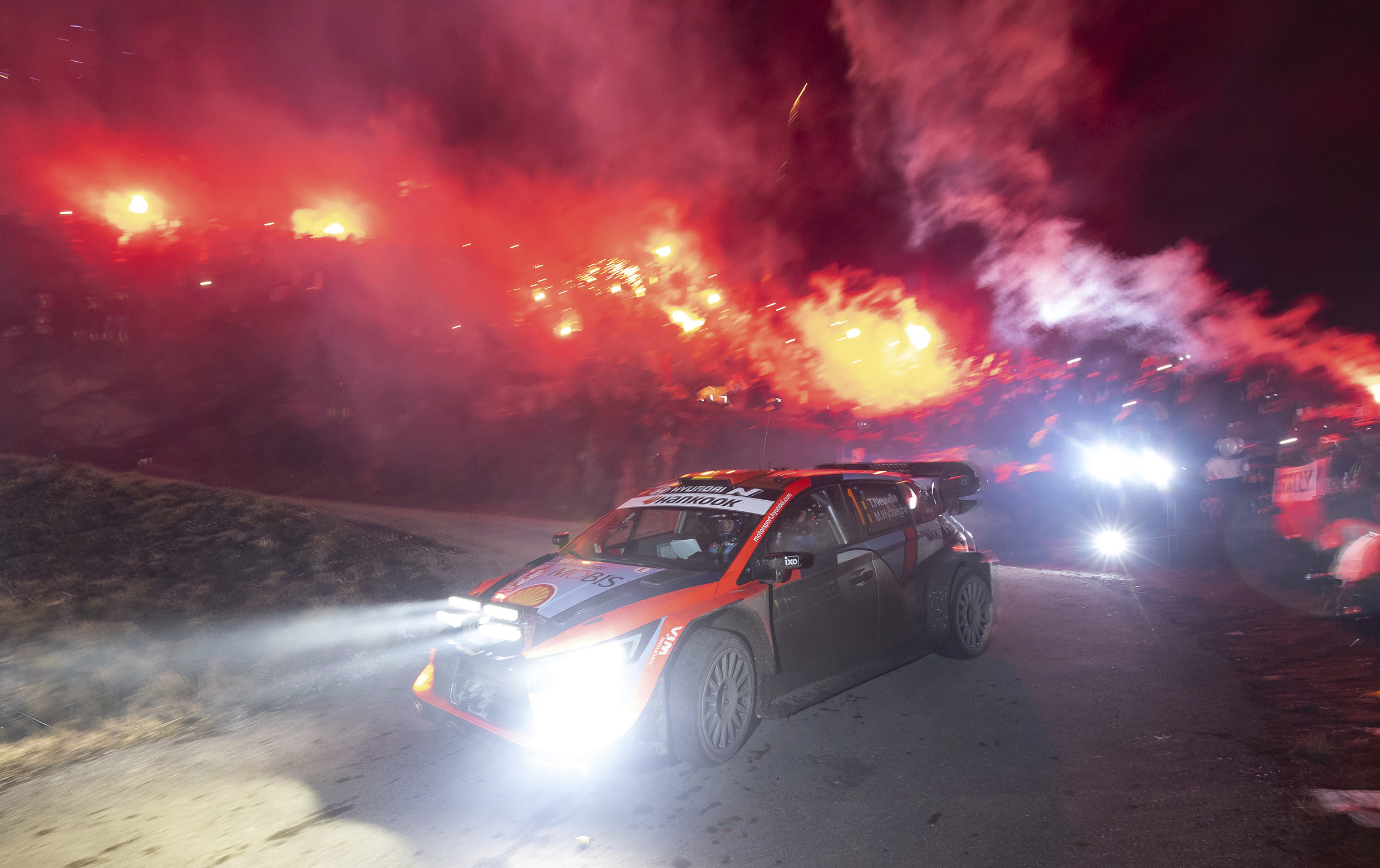
Tight and twisty night stages add to the intensity of the Monte Carlo Rally. Photo: WRC (https://www.wrc.com)
On Thursday, January 23, the 2025 WRC season kicked off under the cover of darkness, just like last year. The action started at 6:05 PM with SS1, a demanding 19 km stretch, followed by a 21.18 km SS2 featuring tricky technical sections and snow-covered roads. The day wrapped up with SS3, a 13.97 km stage, bringing the total to 54.16 km across the three opening tests. Based on last season’s rankings, Thierry Neuville was the first to take to the course, followed by Elfyn Evans, Ott Tänak, Sébastien Ogier, Adrien Fourmaux, Takamoto Katsuta, and Kalle Rovanperä.
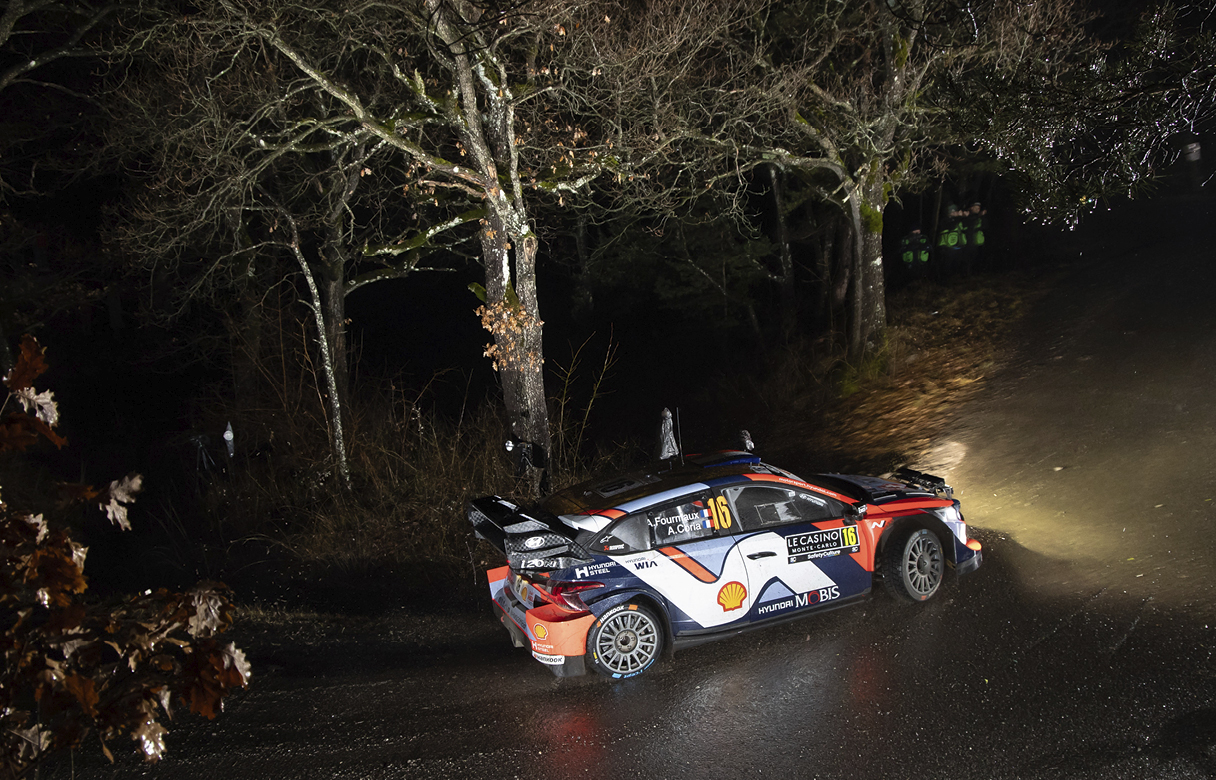
It was Ogier who set the fastest time in the opening stage, with Evans close behind, followed by Hyundai’s trio of Neuville, Fourmaux, and Tänak. Adjusting to his new i20 N Rally1 machine, Fourmaux reflected on his run, saying, "It's a big challenge because there was a lot of dirt on the road, after 10km it was really greasy in braking and in the corners, lost confidence after that and took it easy - a bit too much maybe. It was good fun."
Mud-caked stages challenged grip levels. Photo:WRC (https://www.wrc.com)
SS2 proved tricky for drivers as unexpected patches of mud—absent during recce—caught many off guard. Ogier continued his dominance, setting back-to-back fastest times, with Neuville keeping close behind. SS3 saw Evans clock the fastest time of the stage, but a mistake by Ogier sent him into a fence, allowing Neuville to end Thursday as the overall leader. The combination of dry tarmac and scattered muddy patches created unpredictable grip levels, increasing the likelihood of sud-den slides and accidents. Adding to the challenge, teams were still getting to grips with the characteristics of the new spec tires. After SS2, Tänak summed up the difficulty, saying, "Happy to be here. So many places where we don’t expect it to be slippy. Happy to be here. All good." By the end of the day, Neuville led the overall standings, followed by Evans, Ogier, Tänak, Fourmaux, Rovanperä, and Munster.
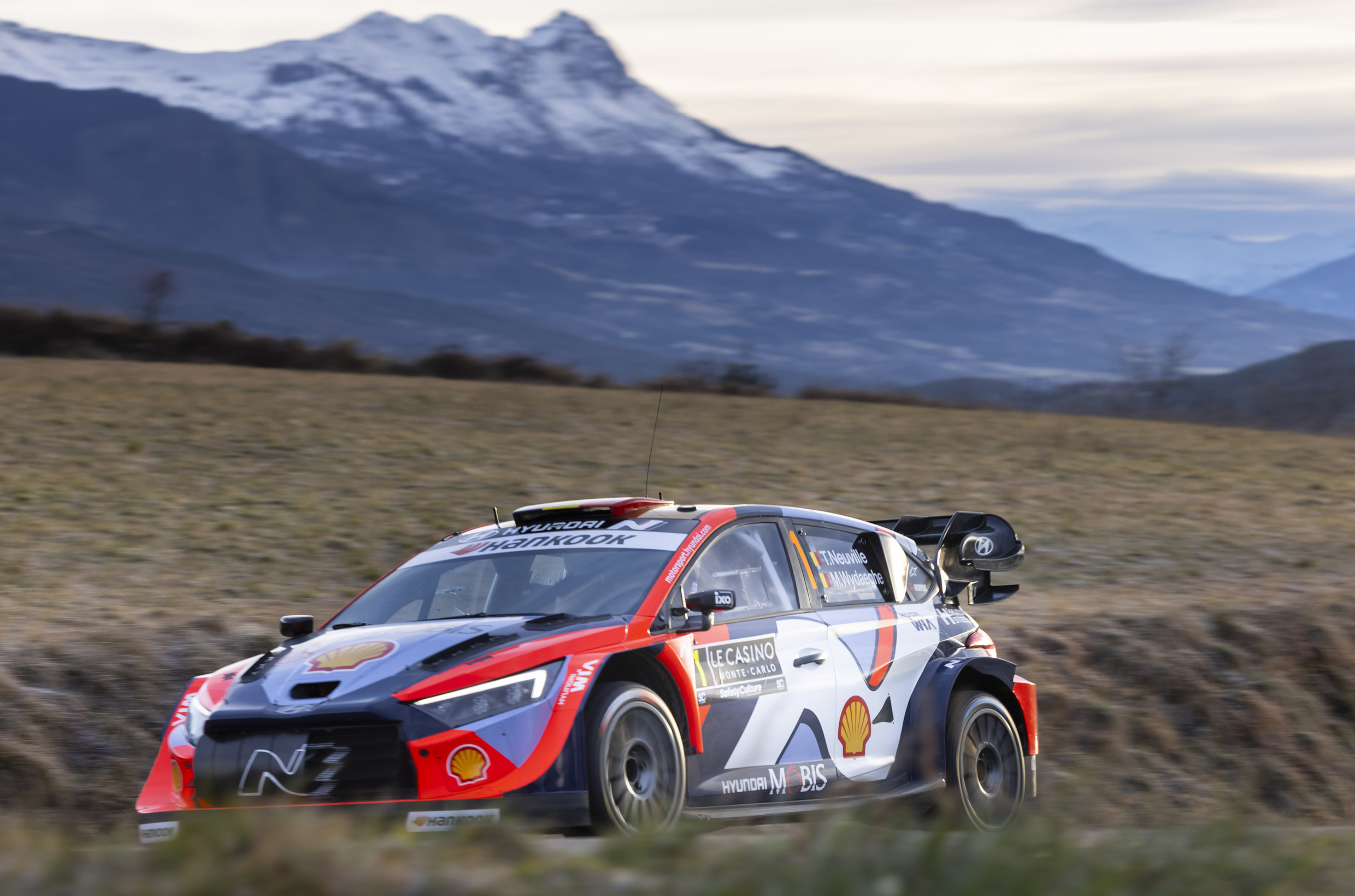
Friday, January 24, kicked off with SS4 Saint-Maurice – Aubessagne (18.68 km), followed by the high-altitude SS5—climbing to an astonishing 1,572 meters—before dropping back down for SS6. These three stages were repeated in both morning and afternoon loops. Tire strategy varied wildly among the drivers. Neuville opted for a mix of two stud-ded and two studless winter tires, while Tänak gambled on an all-stud-ded setup. Fourmaux took a different approach, splitting between stud-ded and super soft tires. The opening stage belonged to Rovanperä, with Munster—who had split his tire choices differently—posting an impressive time just behind him.
Neuville got his left rear suspension damaged, but managed to recover the car. Photo: WRC (https://www.wrc.com)
With slightly thawed road conditions gradually drying up, later-starting drivers benefited from improved grip. SS5 was canceled due to a spectator injury requiring emergency medical assistance. Moving into SS6, disaster struck for Neuville when he misjudged a downhill hairpin, sending his car into a ditch and damaging the left rear suspension. Losing nearly two minutes, he later explained, "I think we paid the price of not having enough experience with the tire for the dry section. It felt like the tire was quite stable, then sud-denly I lost the brakes, saw the ditch, and lost the rear."
Tänak also suffered aerodynamic damage to the rear of his car after running wide out of a corner. (Photo: WRC [https://www.wrc.com])
It wasn’t just Neuville struggling to adapt to the new tires. Tänak also misjudged a corner, briefly dropping into a ditch and damaging the rear aero components of his Hyundai. Fortunately, the car remained drivable, and he made it back to the service park for midday repairs. While the team’s veteran drivers had a tough time, Fourmaux provided a spark for Hyundai, clocking the fastest time in SS6 and injecting much-needed energy into the squad. As the day wrapped up, Evans held the lead, Ogier trailed in second, and Fourmaux climbed to third. Meanwhile, Neuville found himself in even more trouble—slapped with a €10,000 fine for violating WRC’s ‘four freely rotating wheels’ rule during a liaison section. Thankfully, it didn’t result in a forced retirement.
The afternoon stages kicked off with Evans leading SS7, while Ogier set the pace in SS8 and SS9. A costly slide in SS8 saw Evans lose time, allowing Ogier to snatch the overall lead. Hyundai’s Fourmaux remained just 1.6 seconds behind Evans at the close of Friday, while also creating a comfortable 24.3-second gap to fourth-place Rovanperä. Tänak sat in fifth, followed by Katsuta, Pajari, and Neuville—who had suffered yet another setback with a puncture, leaving him nearly four minutes off the lead. Munster, meanwhile, encountered an electrical issue after SS9, dropping him to 19th overall.
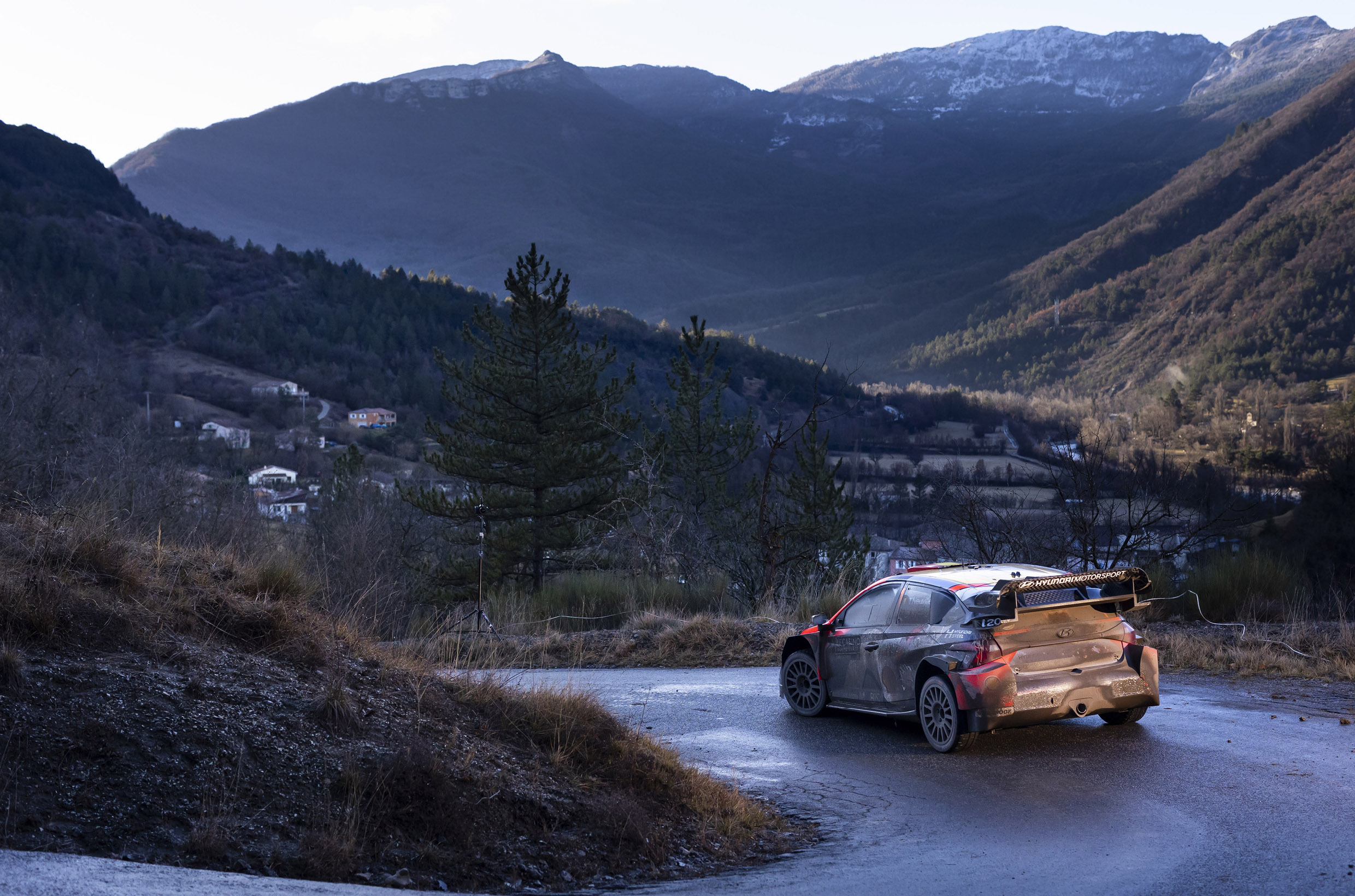
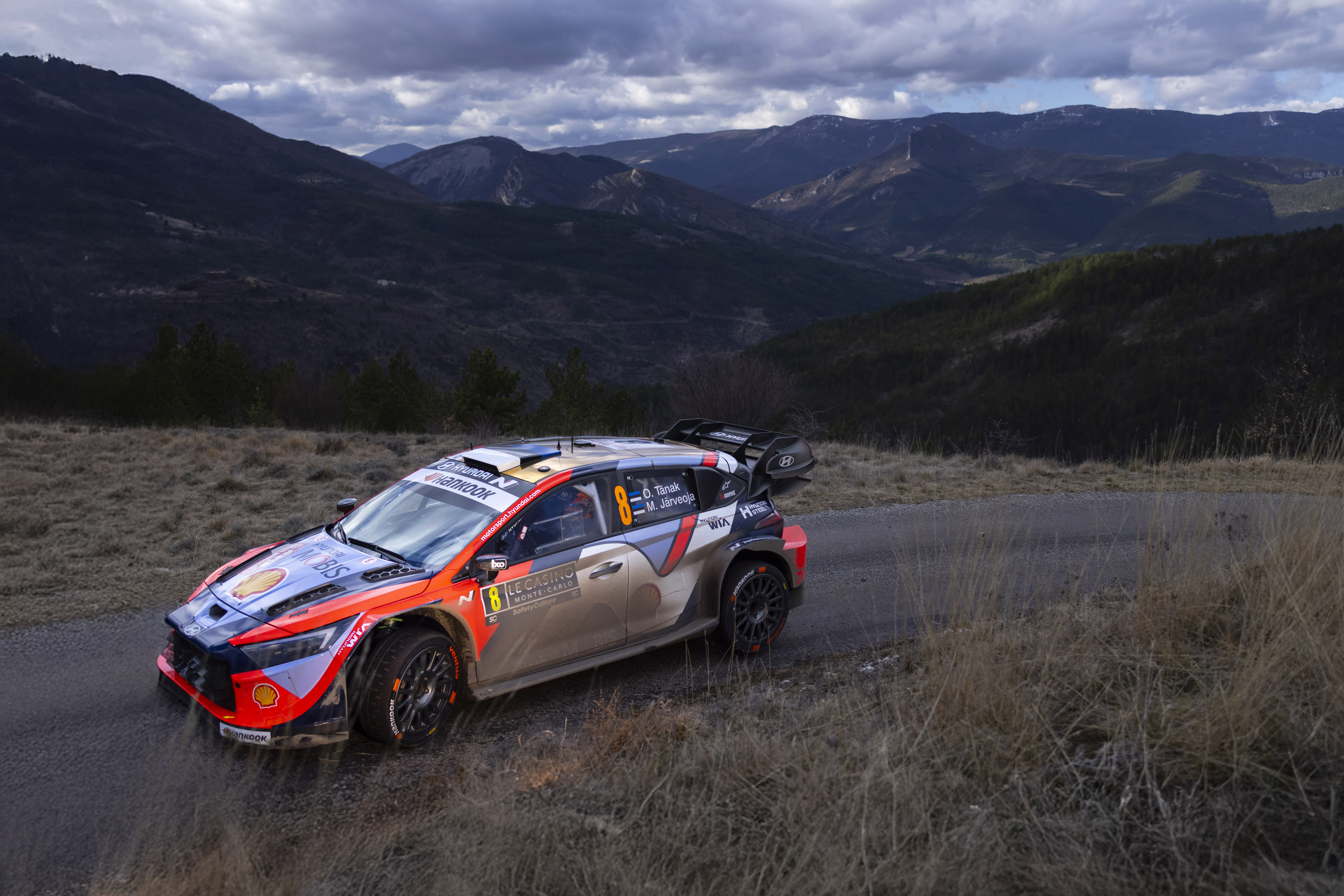
January 25 marked the longest day of the Monte Carlo Rally, with competitors taking on 120.66 kilometers across six stages. The action opened with the 27-kilometer La Motte-Chalancon – Saint-Nazaire-le-Désert, a throwback to classic 1980s Monte Carlo routes. SS11, a 13km-long brand-new addition for 2025, proved especially brutal—featuring narrow, winding uphill sections coated with ice and snow, making grip levels unpredictable.
Munster delivered a shocker by taking his first-ever WRC stage win on SS10. In SS11, Tänak answered back with the fastest time, while Fourmaux continued his charge—leapfrogging Evans into second overall. SS12 saw Katsuta post the quickest time, with Neuville slotting in just behind. The battle for second place remained razor-tight, with Fourmaux and Evans trading blows throughout the day.
Tänak dominated the Saturday stages with an incredible drive. (Photo: WRC [https://www.wrc.com])
In the afternoon, Tänak cranked up his pace, setting three consecutive fastest times, tightening the fight for second place. He delivered a blistering run in SS14, outpacing Ogier by nine seconds and leaving his other rivals trailing by over ten seconds. In his post-stage interview, Tänak reflected on the progress, stating: "We've been working far too long on the setup to find it. I didn't get any kilometers on the slicks. It didn't work in the beginning, but this afternoon it started to click—I found the rhythm. This one had many surprises, tricky stage. Not sure the tire choice was that good, I just drove through and took it safely."
As the day ended, Ogier remained in first, with Evans holding onto second, but now with Fourmaux and Tänak just seven seconds behind. Rovanperä, Katsuta, Pajari, Neuville, and McErlean followed in the standings. In WRC2, Gryazin led the charge, with Rossel and Greensmith in pursuit.
Toyota’s Ogier set the fastest time in the opening stage of Day 3, strengthening his grip on the lead. (Photo: WRC [https://www.wrc.com])
January 26 featured three decisive stages, beginning with 13.97km of SS16, followed by a rerun of the opening day’s 19.01km SS17, and culminating in SS18, which incorporated the famous Col de Turini climb. This year, the final Power Stage was extended to 17.92km, adding to the challenge. The high-altitude roads—rising over 1,000 meters—were covered in snow and black ice, giving the drivers nightmares.
In the early morning twilight, Ogier set the fastest time on SS16, sending a clear message to his challengers. Evans, Rovanperä, Neuville, and Tänak followed closely, while Fourmaux slipped slightly, allowing Tänak to move into third. Meanwhile, overnight rain had frozen on the roads, creating treacherous conditions. Some drivers—like Katsuta and Pajari—took a gamble by mixing spiked stud-ded tires with supersofts, but the strategy backfired. Fourmaux wasn’t done yet. In SS17, he stormed back to post the fastest time, reclaiming third place from Tänak. Now, just four seconds separated Fourmaux from Evans, while Rovanperä was making a charge, closing within 3.1 seconds of Tänak. Unfortunately, Munster’s rally ended early, as he crashed out before the final stage.
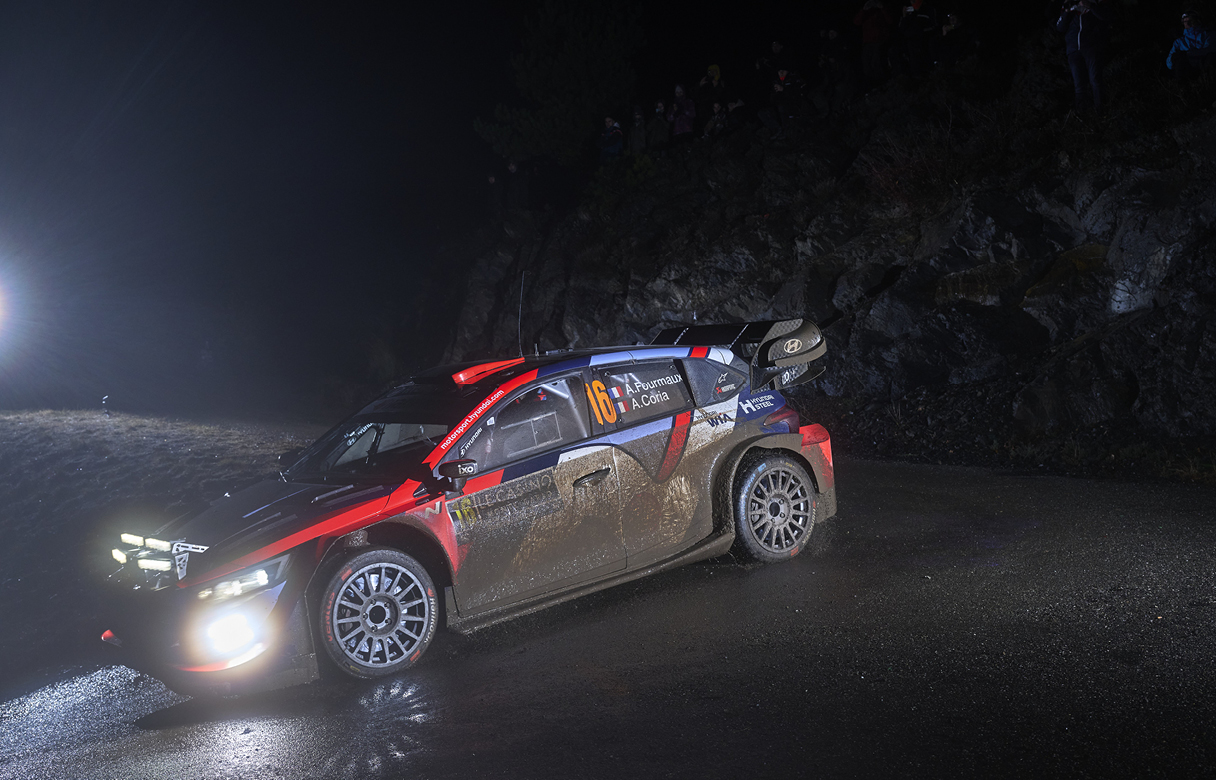
At 12:05 PM, the final Power Stage began under freezing conditions—just 1°C at the start line, with ice and snow blanketing the 1,625-meter summit. Ogier delivered a flawless final run, clinching both the Power Stage win and his 10th Monte Carlo victory, further solidifying his status as a rally legend. An emotional Ogier dedicated the win to his late uncle, hinting that this could be his final Monte Carlo appearance: "I think I have my lucky star with me this weekend. It was my uncle, who we lost one year ago." Evans finished second, while Fourmaux capped off his Hyundai debut with a brilliant third-place podium finish. Rovanperä climbed to fourth, with Tänak and Neuville rounding out the top six. Meanwhile, M-Sport Ford’s rookie Josh McErlean finished an impressive seventh in his WRC debut.
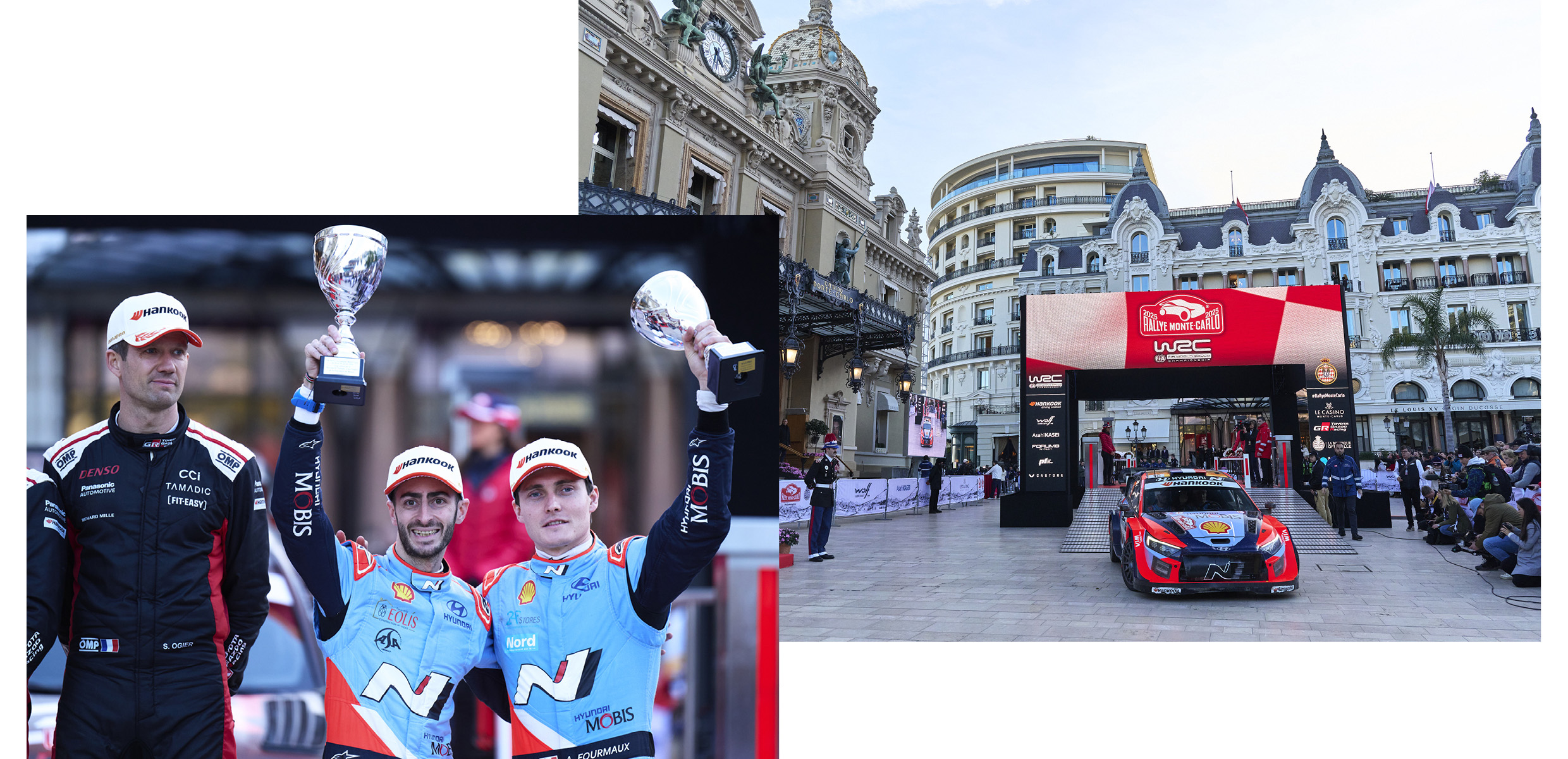
Having joined the team just last December, Fourmaux delivered a remarkable podium finish in a car he was still adapting to—fueling even greater anticipation for his 2025 WRC campaign. In his post-race interview, Fourmaux reflected on the weekend, saying: "Monte-Carlo is always something special, and to have such a great start with Hyundai is really positive, so I am really pleased with my weekend." Then looking ahead, he ad-ded: "We put a lot of pressure on Elfyn and Seb, but we couldn’t push that little bit more with so much snow on the road—we didn’t want to risk too much. It’s a shame, but it’s part of the game—we have no regrets. Sweden will be good, for sure. We will be second on the road in the snow and the cold temperatures, but I am really looking forward to it."
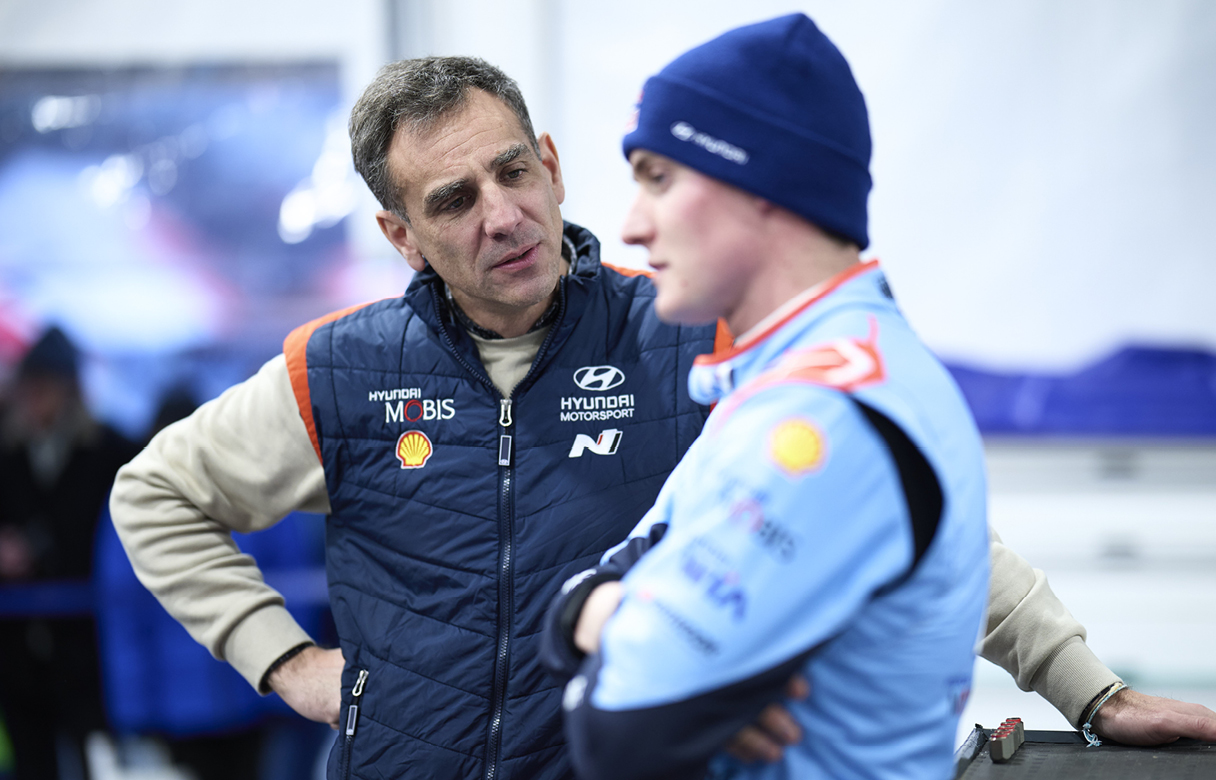
While Neuville and Tänak didn’t secure the results they had hoped for, Fourmaux’s performance proved to be a major bright spot for Hyundai. “After a win here last year a third-place finish comes somewhat as a disappointment, but there are plenty of positives to be taken from this weekend,” said Hyundai Team Principal Cyril Abiteboul. “The first one is Adrien’s result in his first weekend with the team, and I am sure we will see a lot more this year as he gets fully familiar with the car and the team. Another positive is that our drivers managed to take the right approach to the challenges they were facing, which will be the key to this long and unpredictable championship.”
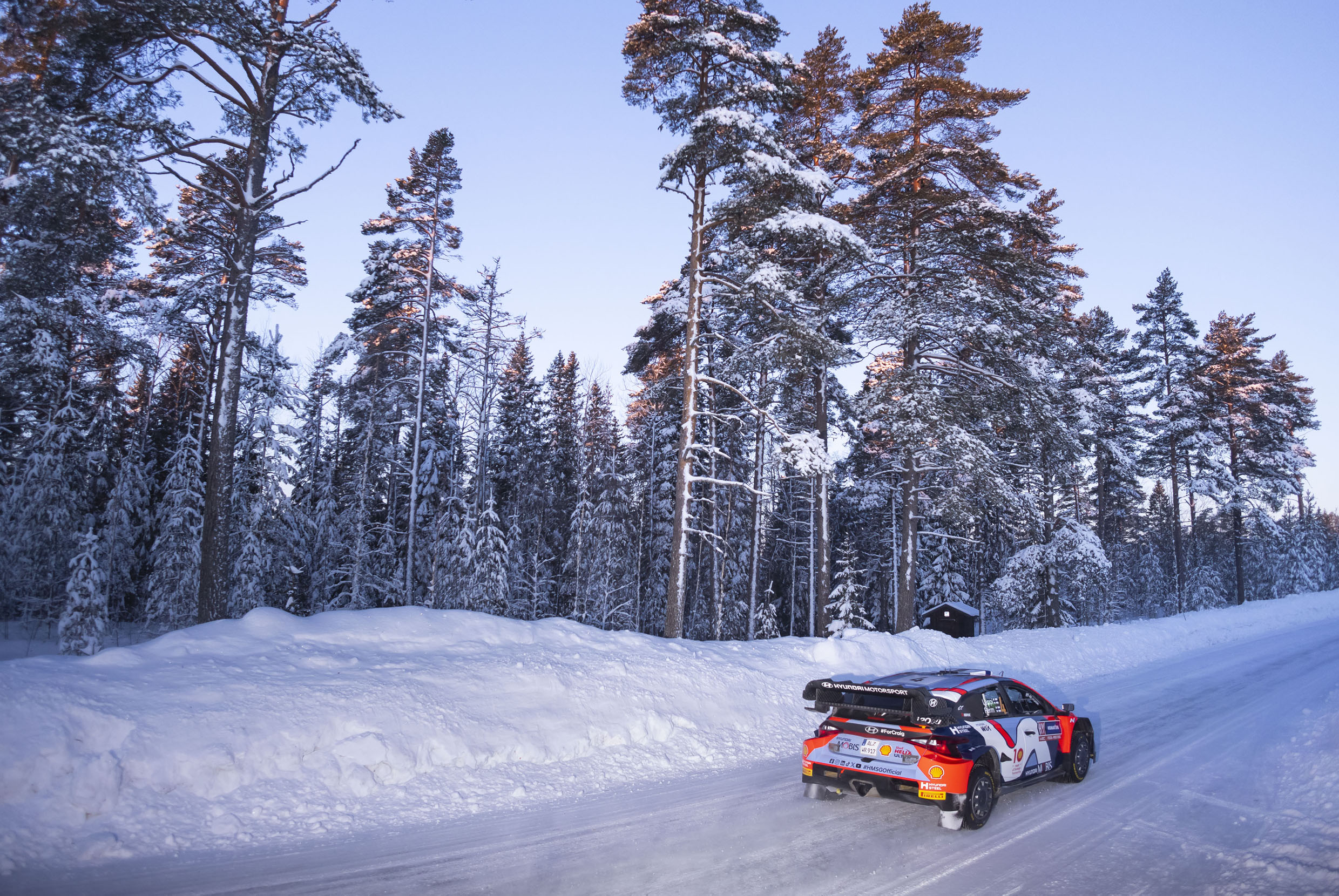
Round 2 of the season, Rally Sweden (Feb 13–16), is the only full-snow event on the WRC calendar. The running order advantage will play into Hyundai’s hands, with Tänak and Neuville set for favorable starting positions. Adding to Hyundai’s optimism, Sweden will mark the debut of their upgraded Rally1 car. The team has high hopes, especially considering Hyundai’s Lappi won here last year, while Fourmaux—then with M-Sport Ford—secured a podium finish in third. With strong past performances and a new car update, Hyundai is set to mount a serious challenge on the snowy stages of Sweden.
By Su-jin Lee
In 1991, Lee’s passion for cars led him to enthusiastically write letters to the newly launched Korean car magazine Car Vision. This unexpected connection led him to start his career as an automotive journalist. He has served as editor and editorial board member for
